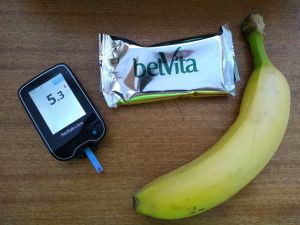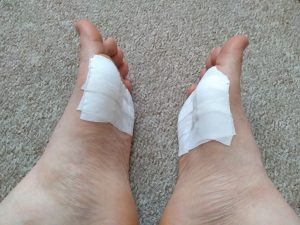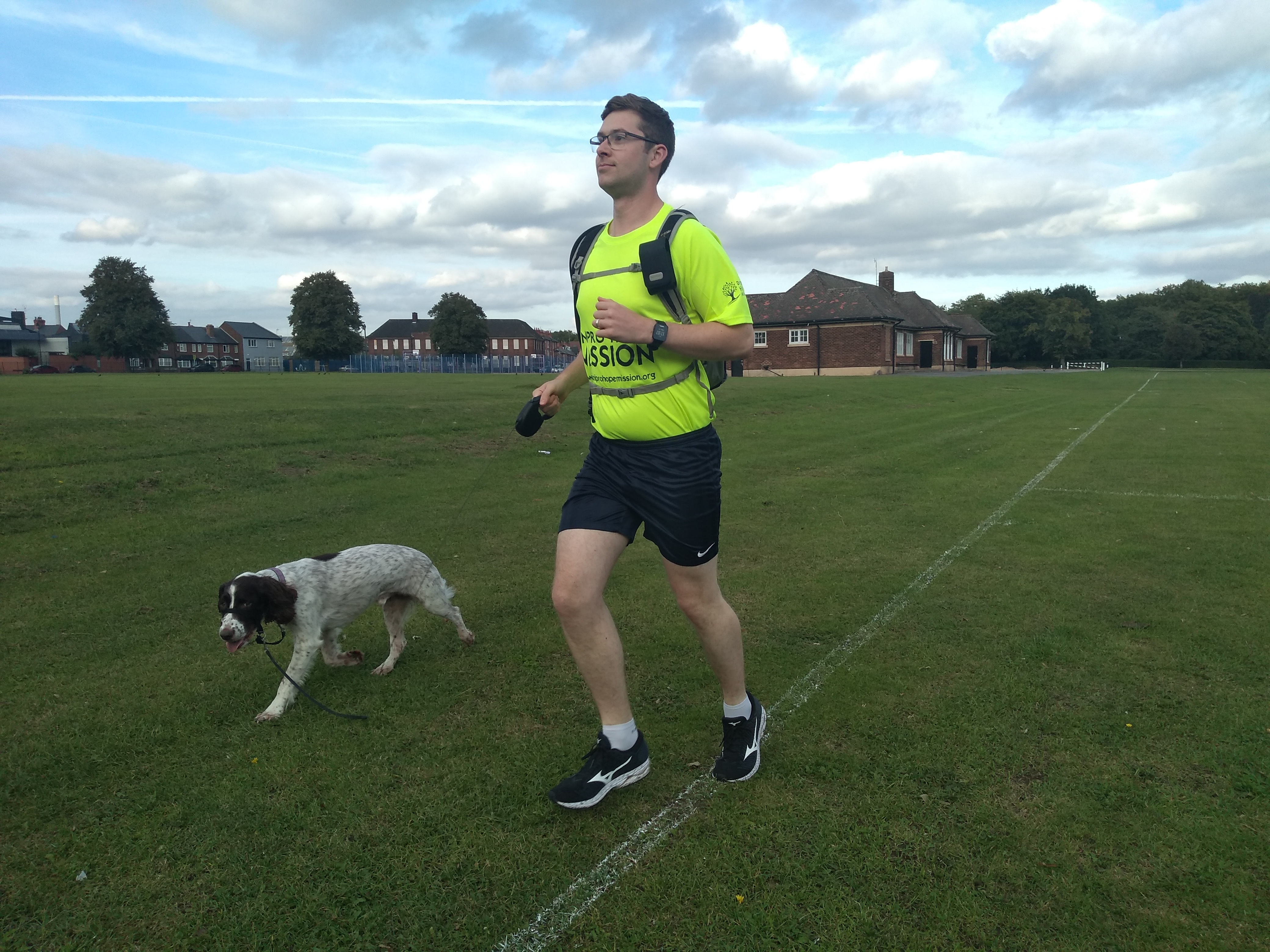My training started seriously in June, having not run any further than 5km twice a week, my body was shocked by my running plan that started with four runs a week, each being roughly 5k and increasing rapidly! The increase in exercise was very challenging initially, but easy in comparison to planning insulin and food requirements before, during, and after the runs. With the bulk of my training done and now tapering off before the half marathon this Sunday, I figured I’d share what has gone into each run along the way.
Before having diabetes, I would simply lace up my trainers, get myself hyped, and then go out for whatever distance run I felt like. Now it’s no longer so easy, I need to know my blood sugar readings, how much insulin (which once injected into me lowers blood sugar unless carbohydrates are eaten) I’ve taken that day, how far and hard I’ll run, the weather, and what I’ve eaten recently. So, taking all of that into account, I need to plan what I’ll eat before the run to keep my blood sugar at safe levels throughout. I might even need to take extra food to eat on the run, which must be amusing to watch as I stumble along while trying to peel a banana.
If my blood sugar drops below a certain point then I can be at risk of falling unconscious, and if high for too long I risk poisoning myself, so keeping these in check are really important. When I’m running my body uses the sugar in my blood faster than usual, and if I have excess insulin in my blood too, then both act to pull me closer to dangerous levels. Nevertheless, I carry a good stock of biscuits and bananas in my running backpack and have to test my blood while running to stay safe.

Now testing my blood used to be really difficult. I’d have to stop or walk while drawing blood from my finger into a machine that would give me the result. Thankfully, the NHS has prescribed me testing equipment that sits in my skin and reads wirelessly, it’s truly freeing in many ways and my fingers don’t hurt as much now. I even strapped the reader’s pouch to my running pack to make testing even easier and faster. These transitions made running long distances without stopping much easier, and better still, safer.
When I’ve finished the run, I’m not finished with watching my blood sugar, as directly afterwards I’m at high risk of my blood sugar dropping. Sometimes, the blood sugar drop doesn’t come directly after a run, it can come hours or even a day later, often catching me off guard. Again, I’m fortunate that I have the testing equipment that I do.
Injuries are the last thing anyone wants when they’ve got a big event ahead and I’ve had my fair share. Blisters from poor fitting shoes plagued me at the beginning and I had to use zinc-oxide tape to strap my feet in blister-prone areas. This worked until I started running more than 7km where it became clear that I needed new shoes, which I now have and thankfully have no need for taping! I also managed to lightly sprain my injury prone right ankle in August which required me to take a week off to recover. This was the same ankle that I badly sprained weeks before traveling to Ukraine, which thankfully acted as a huge personal ice pack for my ankle.

As you might be thinking, and I have too, wouldn’t it be easier to just not exercise like this? Well, no, exercise helps me to control my blood sugar levels better in general, the body is annoying and amazing like that… Thankfully, after taking this task on, I’ve had better control of my blood sugar than previously and I feel far more happy and healthy.
If you would like to donate, please do so on my campaign page, and again thank you.


